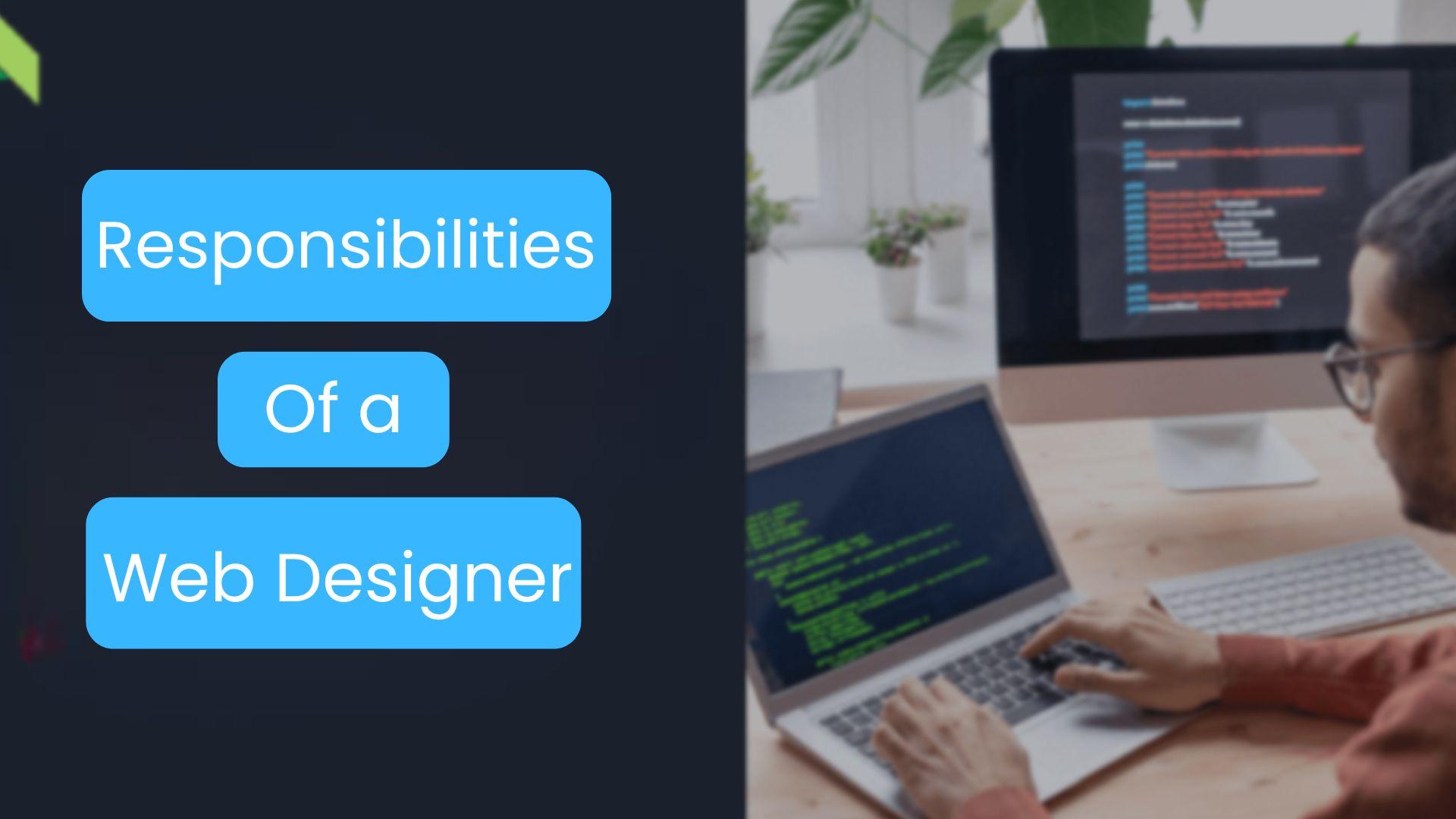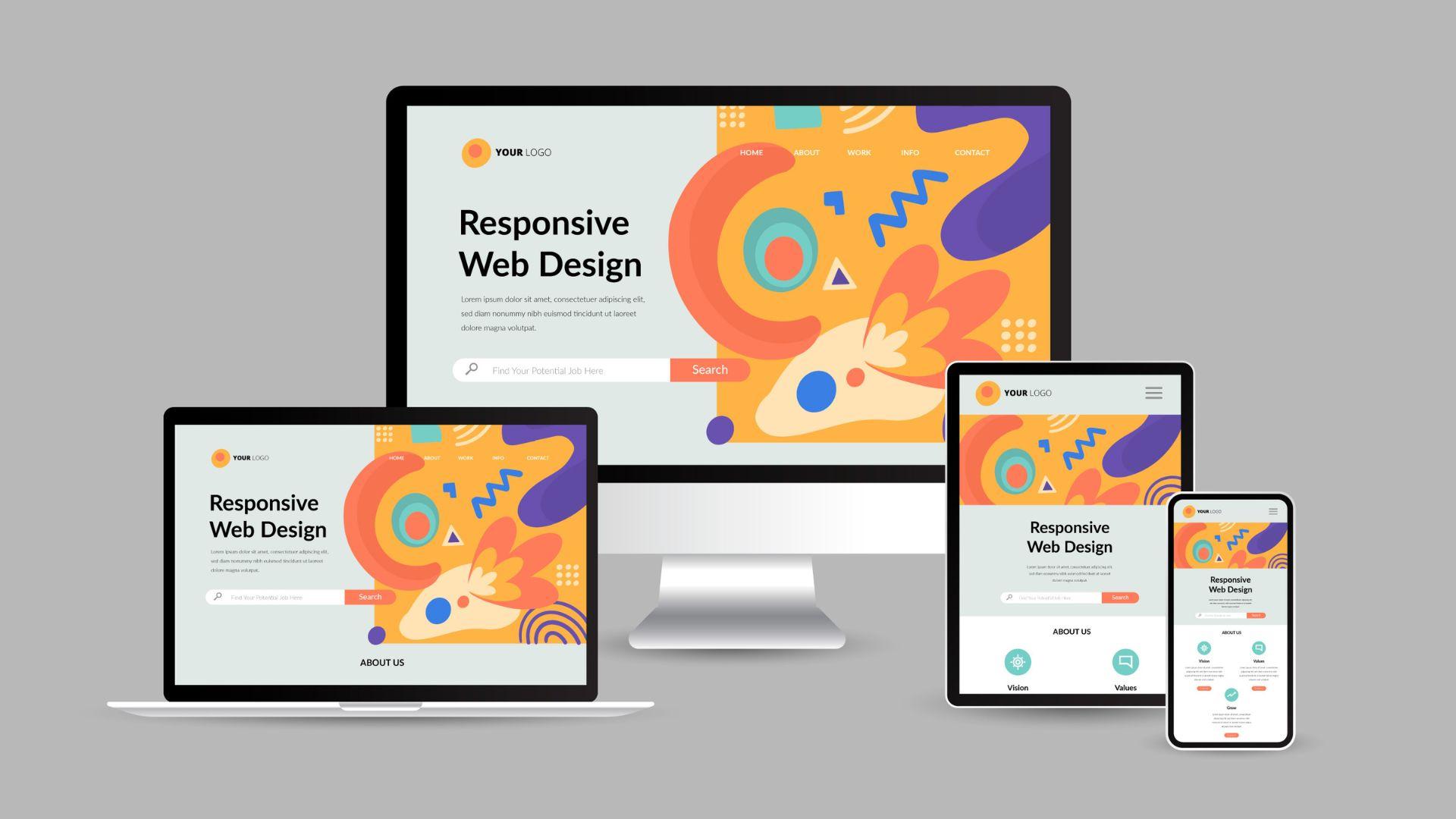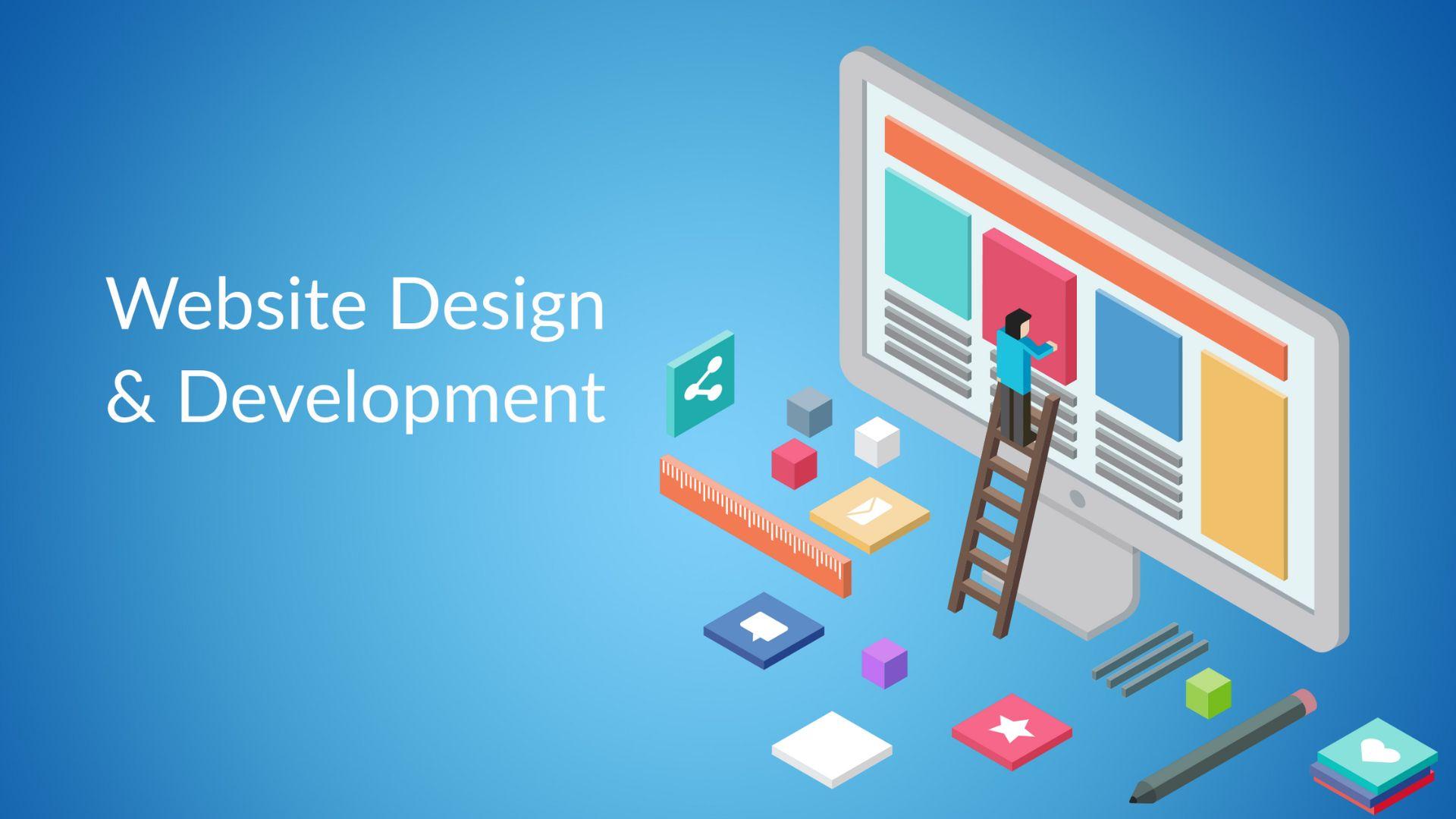Discover the roles of a web designer in visual design, UX, responsive design, and more. Learn about tools, trends, and the detailed process behind great websites.

Navigating the virtual panorama often requires the eager eye and talent of an internet fashion designer. In trendy speedy-paced, technology-driven global, internet designers play an essential function in creating visually appealing, person-friendly websites that appeal to and preserve site visitors. This profession blends creativity with technical information, ensuring that websites not only look properly but feature seamlessly. Here’s an in-depth exploration of the multifaceted world of internet design.

The first part of the concept is primarily related to web design . This includes understanding the client’s vision, goals, and target audience. I have extensive conversations with clients to capture their brand identity and desired user experience. This phase includes developing initial concepts and creating wireframes, which serve as a blueprint for the design and layout of the website.
For example, when working with a new e-commerce startup, I start by understanding their brand values, their target demographic, and the type of product they sell. This can include creating personas to represent different parts of their audience and mapping user journeys to visualize how these individuals will interact with the website In this project of the year, wireframes defined key pages such as the homepage, product catalog, product description, and checkout process.
Suggested Read:-Why Every Business Needs a Custom Website
Arguably, among all web design aspects, the visual design stands out the most. They consist in the selection of color schemes, typography, images, and other visual elements. Normally, to develop such elements, I use design software like Adobe Photoshop, Illustrator, or Sketch. It is about coming up with a harmonious attractive design that matches the brand identity and is appealing to the target customers. During this process, I follow certain imperative principles such as visual hierarchy, contrast, and balance. They help ensure that the most important information is put out there clearly and the website is beautiful.
Take, for example, the redesign of a local bakery website. The bakery wanted a warm and welcoming feel that reflected their brand. I chose soft colors with pastels and signature-style fonts to give them a homey and artistic feel. They made extensive use of high quality images of their baked goods, designing the layout to highlight special offers and seasonal products. The end result was a visually appealing website that effectively communicated the bakery’s appeal and attracted many local customers.
User enjoy design makes a specialty of the overall feel of the website. It’s approximately making the website intuitive and clean to navigate. I conduct consumer research, create person personas, and broaden person journey maps to apprehend how traffic engages with the web page. This facilitates in designing of interfaces that can be both practical and enjoyable to apply. Prototyping and value checking are indispensable components of this process, permitting me to refine designs primarily based on consumer remarks and behavior.
Consider a financial services firm that wants to improve accessibility for its online customers. I started interviewing existing customers and understanding their pains and needs. Based on this research, I created individuals representing a range of users, from young professionals to retirees. User navigation simulations were developed to illustrate how these individuals would interact with the portal features. The prototype was then tested with a small group of users, resulting in an iterative development that made the portal simpler and more user-friendly.

In an era where humans access websites from various devices, a responsive layout is crucial. I make sure that websites are mobile-pleasant and look first-rate on all display sizes, from desktops to smartphones. This involves the use of bendy grid layouts, scalable photographs, and CSS media queries. By prioritizing responsive layout, I assist groups reach a broader target market and enhance consumer pride across specific devices.
For instance, whilst designing a journey blog, it became crucial to ensure that the website online becomes accessible and visually attractive on huge monitors and small cellular screens. I used a responsive framework like Bootstrap to create a fluid grid layout that was adjusted according to the screen length. Images had been made responsive the usage of CSS to ensure they scaled efficiently, and touch-friendly navigation became implemented for cellular users. The result was a continuing experience throughout all devices, which became mainly important for the weblog’s audience of on-the-pass travelers.
Web design is usually a collaborative attempt. I work intently with net developers, content creators, and advertising teams to convey an internet site to life. Effective communique and teamwork are vital to make sure that all elements of the website align with the general imaginative and prescient. Regular meetings and updates assist hold every one on the same page and deal with any challenges that arise for the duration of the layout system.
When growing a company's internet site for a technology corporation, for instance, collaboration turned into the key. I coordinated with the improvement team to make sure that my designs have been technically feasible and aligned with the trendy coding standards. I additionally worked with content creators to integrate attractive and search engine marketing-friendly copy. Regular meetings with the advertising team ensured that the design supported their campaigns and goals. This collaborative approach led to a website that became visually beautiful, and purposeful and efficiently communicated the company’s progressive spirit.
Suggested Read:- Importance of Responsive Design in Modern Websites
An experienced web designer is well-versed in various design tools. Software like Adobe Creative Suite, Figma, and Sketch are staples in my toolkit. These tools allow me to efficiently create detailed drawings, diagrams and prototypes. Staying up-to-date with the latest versions of these tools and available resources is essential to maintaining a high level of productivity.
For example, using Adobe XD , I can create interactive prototypes that customers can click on, giving you a realistic example of a website’s functionality. Tools like Figma facilitate real-time collaboration with other designers and stakeholders, making the process more efficient and cohesive. Mastering these tools allows me to deliver high-quality designs that meet the client’s needs and exceed their expectations.
While coding isn’t always necessary, a strong understanding of HTML, CSS, and JavaScript is very useful. These languages are the building blocks of web design. HTML organizes content, CSS methods, and JavaScript adds interactivity. Knowing these languages allows you to communicate effectively with developers and solve small problems on your own.
For example, when designing a dynamic portfolio site, I used my knowledge of HTML and CSS to create a visually appealing layout and style. JavaScript was then used to add interactive elements such as animation. This engineering effort ensured that the final design was not only aesthetically pleasing but functional as well.
Many websites have been built on content management systems such as WordPress, Joomla, and Drupal. I need to have expertise in upgrading and maintaining these platforms. This requires understanding how themes, plugins, and programs are configured to meet the specific needs of the business. Knowledge of CMS platforms enables quick and efficient updates and maintenance.
For the nonprofit’s website, I created a simple and easy-to-edit site using WordPress. A custom theme was created to match the organization’s logo, plugins were added to make donations, event management, and volunteer registration easier Using the power of WordPress, I was able to deliver a robust website the organization was able to provide self-management of its online presence.
Search engine optimization (search engine optimization) is essential for a website's visibility and fulfillment. I include SEO quality practices into the layout method, together with optimizing images, using proper header tags, and making sure fast load instances. Understanding the fundamentals of on-web page search engine optimization facilitates in growing designs that are not only person-friendly but also engine-friendly.
For instance, while designing a blog for a fitness trainer, I ensured that each page had a clean hierarchy with header tags (H1, H2, H3) that had been optimized for applicable keywords. Images have been compressed to enhance load instances, and meta descriptions have been crafted to decorate and seek engine visibility. These search engine optimization techniques helped the blog rank higher in seek effects, using greater organic visitors and developing the trainer’s online presence.
The design process begins with discovery. I gather information about the client’s business, goals, target audience, and competitors. This includes interviews, surveys and market research. Understanding customer needs and expectations is essential to creating a successful website.
For luxury hotels, I started with an extensive discovery that included interviews with hotel staff and surveys of previous guests. I analyzed competitor websites and found strengths and weaknesses. This comprehensive research provided valuable insights that shaped the design of the program, ensuring it was aligned with the target audience and stood out in the competitive hospitality market
Once I have all of the important information, I flow directly to the planning section. This involves developing a sitemap, which outlines the structure and hierarchy of the website. I also increased a content strategy, determining what form of content could be covered on each web page. This stage units the foundation for the layout and improvement system.
In the case of a web educational platform, the making plans section involved growing an in-depth sitemap that prepared guides, resources, and user profiles. A content material approach has been developed to provide engaging and informative fabric for both prospective and modern college students. By carefully making plans for the website’s structure and content, we ensured that customers ought to without problems find what they wished and had an unbroken mastering enjoyment.
Wireframing is the next step, where I create low-fidelity sketches of the website layout. These wireframes focus on design and implementation rather than management. Once the wireframes are approved, I move on to prototyping, creating detailed, interactive versions of the designs. Prototypes allow customers to experience and how the website works and flows before the final design is implemented.
For a tech startup's product landing page, wireframes were first created to show key features such as features, benefits, testimonials, and call-to-action buttons and then these wireframes were converted into interactive prototypes using Figma provided stakeholders feedback on user flow to navigate through the page and could This iterative process ensured that the final design was user-centered and effective in driving change.

Once the prototypes are approved, I move on to the actual design phase. It replaces all visual elements with a more realistic design. Once the design is complete, it’s given to the development team, or I can code it myself if it’s a smaller project. Collaboration between designers and manufacturers is essential to ensure the final product matches the original vision.
Create more realistic layouts for a fashion retailer’s website to showcase their latest collections. These programs included advanced visual elements such as stylized graphics, typography, and graphics. Once completed, I worked closely with the development team to ensure the images were translated accurately to a functional website. This collaboration resulted in a visually stunning and efficient e-commerce platform that increased the retailer’s online sales.
Before launching the website, thorough checking is carried out to pick out and fix any problems. This consists of usability trying out, compatibility trying out across distinctive browsers and devices, and performance trying out to ensure fast load times. Once everything is in order, the website is released. I screen the website and put it up to make certain the whole lot runs smoothly and to make any important modifications.
For a healthcare issuer’s website, great testing is finished to ensure that the website online become on hand to all customers, including people with disabilities. Compatibility checking out changed into carried out across numerous browsers and devices to make certain a regular revel in. Performance trying out equipment like Google Lighthouse has been used to optimize load times. After a hit launch, ongoing monitoring helped pick out and cope with any issues directly, ensuring a clean and reliable personal experience.
The web design enterprise is constantly evolving. To live aggressively, I make it a priority to stay updated with trendy tendencies, technology, and first-class practices. This involves studying industry blogs, attending webinars and meetings, and collaborating in online courses and workshops.
For example, I frequently follow layout blogs like Smashing Magazine and A List Apart to maintain abreast of contemporary layout traits and techniques. Attending meetings like Adobe MAX and UX Week provides valuable insights and networking possibilities. By staying knowledgeable and engaged with the enterprise, I make sure that my designs are present-day and effective.
Continued study in this area is needed. I frequent online courses and certifications to expand my skills. It involves learning new design tools, coding languages , and emerging technologies. By constantly staying informed and improving, I ensure that my programs remain relevant and effective.
I recently completed a course on advanced CSS Grid and Flexbox design, which has greatly improved my ability to create complex and responsive designs. In addition, I went after a certificate in UX design to deepen my understanding of user-centered design principles. This commitment to continuous learning allows me to provide innovative solutions to my clients and stay at the forefront of the competitive field of web design.
Phase | Activities | Tools Used |
Conceptualizing | Client meetings, idea generation, creating wireframes | Pen and paper, wireframing tools (Balsamiq) |
Visual Design | Selecting color schemes, typography, creating visual elements | Adobe Photoshop, Illustrator, Sketch |
UX Design | User research, creating personas, prototyping, usability testing | Figma, Adobe XD, UsabilityHub |
Responsive Design | Ensuring designs work on all devices, using flexible grids and media queries | Browser dev tools, responsive design tools |
Collaboration | Working with developers, content creators, and marketing teams, regular meetings and updates | Slack, Trello, Asana |
Mastery of Tools | Proficiency in design software, staying updated with the latest tools and features | Adobe Creative Suite, Figma, Sketch |
HTML, CSS, JS | Understanding and occasionally writing code, communicating effectively with developers | CodePen, Sublime Text, GitHub |
CMS Management | Customizing and managing CMS platforms, installing themes and plugins | WordPress, Joomla, Drupal |
SEO Best Practices | Optimizing images, using proper header tags, ensuring fast load times | Google Analytics, Yoast SEO |
Discovery Phase | Gathering information about the client's business, goals, target audience, and competitors | Surveys, interviews, market research tools |
Planning and Strategy | Creating a sitemap, developing a content strategy, setting the foundation for design and development | Mind mapping tools, content strategy tools |
Wireframing & Prototyping | Creating low-fidelity wireframes, developing interactive prototypes | Balsamiq, InVision, Figma |
Design & Development | Finalizing high-fidelity designs, collaborating with developers, coding if necessary | Adobe Creative Suite, code editors |
Testing & Launch | Conducting usability, compatibility, and performance tests, launching the website, and monitoring post-launch | BrowserStack, Lighthouse, Google Analytics |
Staying Updated | Reading industry blogs, attending webinars and conferences, participating in online courses and workshops | Online learning platforms, industry blogs |
Continuous Learning | Expanding skill set through online courses and certifications, learning new tools, languages, and technologies | Udemy, Coursera, LinkedIn Learning
|